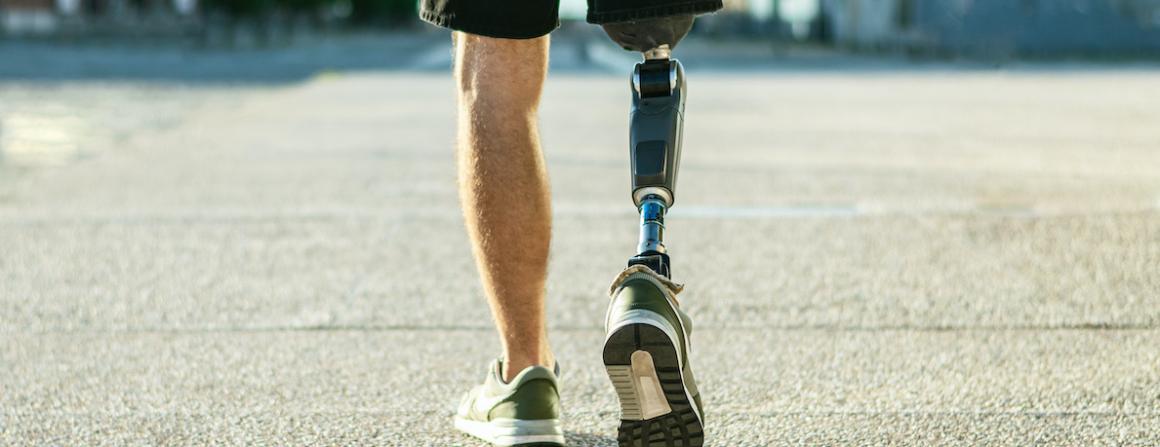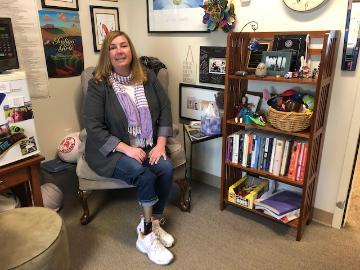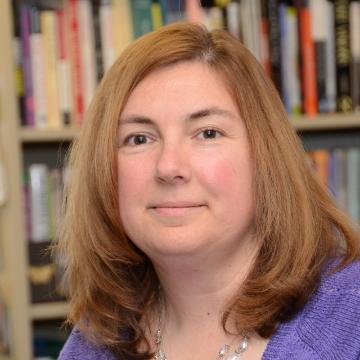
IMPROVING ACCESS FOR EMPLOYEES WITH DISABILITIES
Laure Ellingson
“People with disabilities (PWD) are the fastest growing minority social group in the world. Moreover, this group is one in which many, if not all individuals, will eventually join due to accidents, injuries, illnesses, wear and tear on aging bodies, and genetic factors.”
— From “Disability” by Laura Ellingson and Margaret M. Quinlan, SCU Scholar Commons, 2014
Following this summer’s 30th anniversary of the Americans With Disabilities Act, which prohibits discrimination against people with disabilities in several areas including employment, comes October’s 75th annual observance of National Disability Employment Awareness Month.
Initiated by the U.S. Department of Labor in 1945, this year’s theme, “Increasing Access and Opportunity,” speaks to the challenges of 61 million Americans who live with a disability, about one-third of whom are employed.
Laura Ellingson, the Patrick A. Donohoe, S.J. Professor in Women’s and Gender Studies, knows these challenges well.
As a college sophomore in 1989, she was diagnosed with bone cancer in her right leg that required surgery, chemotherapy, and years later, amputation above the knee. Powerful painkillers, taken daily, leave her with dry mouth, constipation, fatigue, and restless sleep.
While Ellingson’s prosthetic leg helps her navigate the world, she is often seen around campus traveling on her Segway. She is also one of Santa Clara University’s most high-profile disability rights advocates, and with Molly King, assistant professor of sociology, co-chairs the SCU Disabilities and Chronic Illness Network.
Below, Ellingson offers some of her own insights, as well as those other SCU employees with disabilities have shared with her.
You often talk about Rosemarie Garland-Thomson, a disability studies professor at Emory University who focuses on disabilities at work, and her concept of “misfits.” What does she mean?
If you look at the word literally, that is what happens in the spaces where people with disabilities “misfit” a building’s engineering, from a staircase or a doorway that only fits some kinds of bodies. There is a “miss-fit” between our needs and our environment. So, if we cannot conform to the doorway, most people think that something is wrong with the person with the disability.
When people are requesting a new building or a new center, they may follow the Americans With Disabilities Act guidelines, but they often don’t take into consideration the practical realities that crop up, like making people with disabilities travel the entire length of a building to get inside instead of letting them go through a different back or side door that is closer.
What are some disconnects many Americans have about people with disabilities?
One of the fundamental problems with helping people understand disabilities is when I ask them what they picture when I use that word. They say they picture a person in a wheelchair. But the vast majority of people with disabilities do not use wheelchairs.
There are people with learning disabilities, people who are blind; people with lupus or Crohn’s Disease, and other illnesses like fibromyalgia, intestinal pains, dizziness—all of these things can flare up and lead to an inability to work, or to even sit down. Lots of older faculty on campus are not legally disabled, but getting to and from the parking lots may be quite a long walk for them.
Another issue that comes up for a lot of people is that they don’t understand that the disabled experience is not the same every day. There are good days and bad days.

Professor Laura Ellingson
For example, at Santa Clara, faculty with disabilities may find it very difficult to teach at certain times of day, needing an accomodation of teaching in the morning, mid-day, or late in the day, and for many it's far easier to teach two days a week rather than three. Yet there are not enough classrooms at SCU to allow everyone to teach precisely when they would like—among other challenges.
Disabled people don’t want to be downers; quite often they smile when they don’t feel good, or when they’re in pain, because they don’t want to be unliked, or not be cooperative, or team players. And some of us have gotten so good at smiling through the pain that people don’t really believe we have a serious problem. It’s kind of a Catch-22.
Oddly enough, you personally have run into an Americans With Disabilities Act design at Santa Clara that works well for some but doesn’t work so well for you. What is that?
It’s funny. Santa Clara has designed curb cuts at intersections (a ramp cut into a street curb to provide access for wheelchairs or strollers between a sidewalk and the street). I hate those things because it’s harder for me to use than stepping off a curb, just going from one flat surface to another. My foot doesn’t work the way a regular foot works, so it actually makes my life more difficult. All of which is to say there is no one size fits all.
Santa Clara has designed an accessible campus, but there are some under-the-radar modifications that you and others say would also be helpful. Could you talk about that?
Yes, Santa Clara has made it better in many ways: the stalls in the bathrooms are accessible and it’s easier to get into most buildings. But there are lots of things most people don’t think about. For example, some people cannot sit comfortably in the kinds of desks we use in many classrooms; if you happen to be in a wheelchair, for example, you cannot sit in a one-piece desk; some of them swing out, but a lot of them do not.
And the only kinds of chairs in a lot of rooms roll, so when you sit on them, you have to swing your hips to sit down, and when you do sit down, the chairs may roll away—you can only control the rolling with an arm or a leg. So you want to make sure there’s always another chair without rollers in the room. It’s not just me; several professors say they have struggled to get a room that meets their needs.
Believe it or not, there are allergies to chalk dust, and people who have to spend a lot of time in a room with chalk dust have to make sure they end up only in rooms with white boards. But we don’t have enough classrooms on campus with white boards.
These issues are not unique to Santa Clara. We have an Office of Accessible Education that helps students with disabilities, and they are beginning to help staff and faculty. And it’s not that we are ungrateful for the changes that have been made that conform to the law. But there is room to grow to make it a more accessible community for everyone.
Ideally, it would be helpful to have a designated person in Human Resources who has done this kind of work with disabled people to help students, staff and faculty get the accommodations they need. We need real chairs, and real desks, and real seats. They repaved a wonderful road in front of the Mission Church, and they finally put in some park benches along the way from the parking garage by the art building to the church. But it would be nice if they put them (benches) in all the way to Benson Memorial Center.

